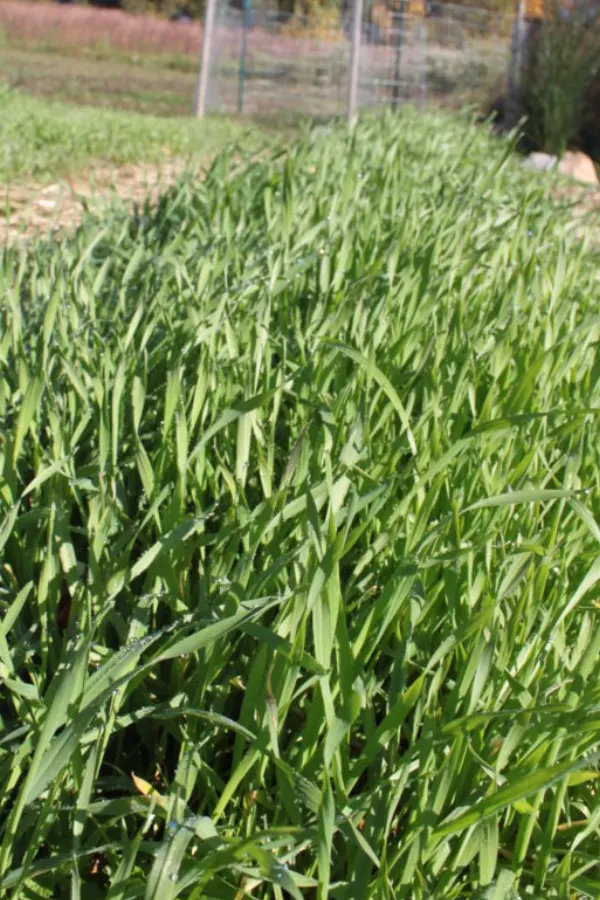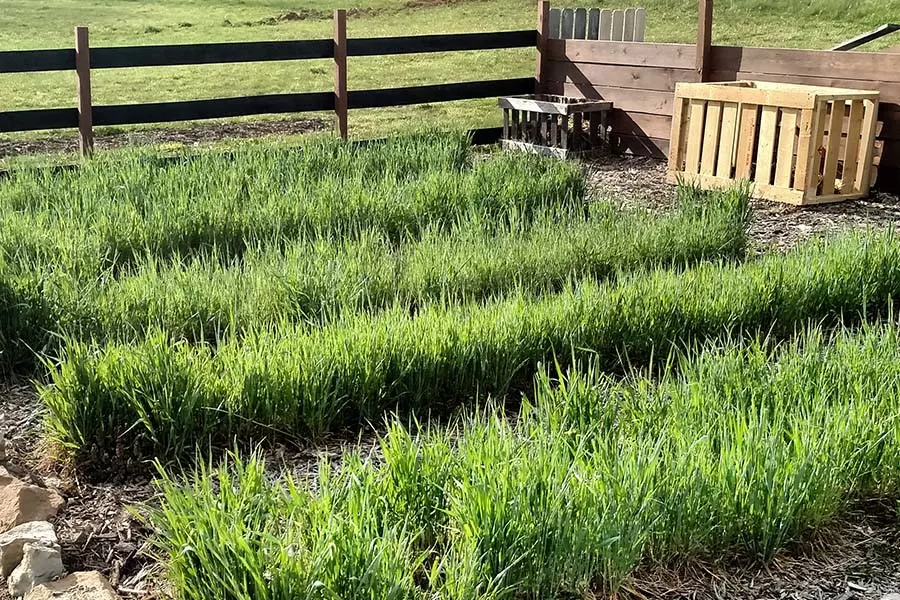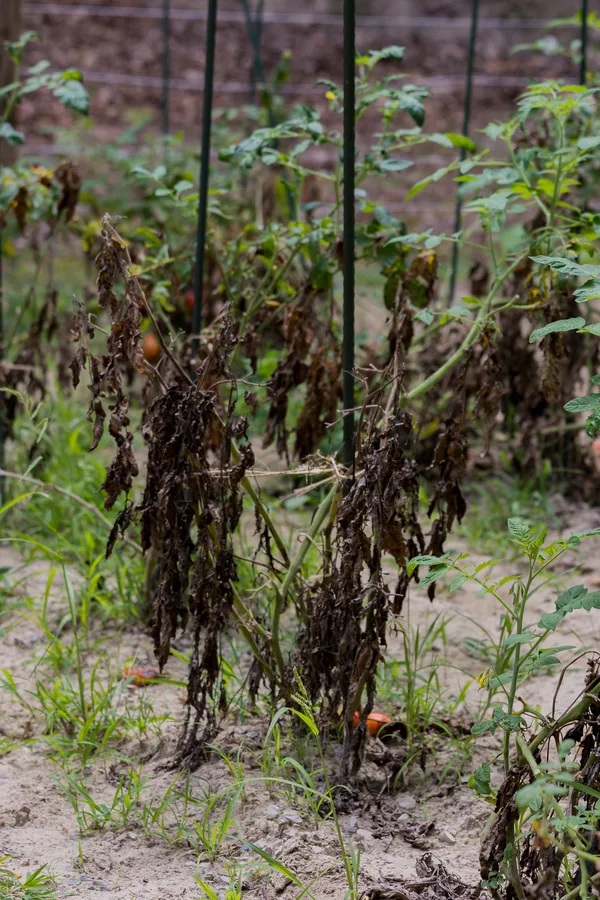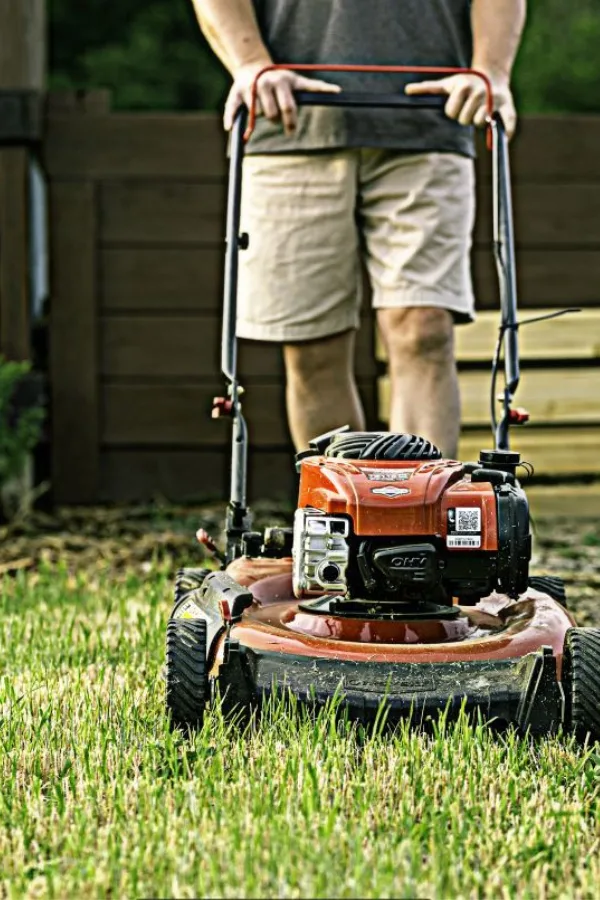When it comes to caring for your garden’s cover crop after planting, a few simple tips can go a long way towards getting the most from your fall planting efforts.
More and more people are discovering the incredible power of covering their garden in the fall with a cover crop. Not only does it help to protect the soil through winter, it also recharges the soil with a myriad of nutrients. And if that wasn’t enough, it helps keep your garden free of weeds too!
But although there is a tremendous amount written on how and what to plant as a cover crop, there is very little found about caring for it once one is planted. Especially when it comes to how to best cut it down and incorporate a cover crop into the soil the following spring.

Cover Crop Questions…
One thing is for sure – the lack of clear cut information always leads to a mountain of cover crop care questions to our inbox over the fall, winter and early spring. As in, should a cover crop be mowed in the fall, spring, or both? Is it okay to let a cover crop go to seed? And of course, the biggest question of all, do I have to till the crop into the soil in the spring before I plant?
All of the above are certainly valid and important cover crop care questions. So much so, we thought today would be a great time to answer all of them and more with an article specifically on the subject. With that in mind, here is a look at how to best maintain your garden’s cover crop once it is planted!
What To Do With Your Garden Cover Crop After Planting
A cover crop should be planted early enough in the fall to allow good growth to cover the soil. For best results, that means planting four to six weeks before the first hard frost. A few excellent choices for cover crops include annual rye and clover. Both germinate fast and can fill in bare soil quickly.
But no matter what cover crop you choose, understand that each years planting can turn out a bit different. Unfortunately, with the unpredictability of weather and the timing of planting, results can and will vary.

It may turn cold quicker than normal, and the cover crop might not fill in as thick as you like before winter. Or, vice-versa, the growing season may stay hotter than normal, and it might grow larger and thicker than normal.
The Value Of A Cover Crop
The important thing to realize is that either way, the crop is still good and extremely valuable to your garden. As you will see below, if it is a bit sparse, you can do a few things to help. And if it grows too thick? Well, that can be remedied as well!
And what if you simply missed planting a cover crop all together? Well, don’t despair. For now, simply cover the garden with straw, leaves or even a tarp to protect it. Then, next spring, you can plant a quick “green manure” cover crop to help power the soil instead. (See : How To Plant A Spring Green Manure Crop)
Now lets take a look at how to care for your cover crop in the fall, winter and spring:
Fall Care
Under most circumstances, once a garden is planted with a cover crop, a gardener’s work is complete for the year. You simply sit back, allow the crop to fill in, and let it protect your soil through winter.

But if your garden’s cover crop was put in late, or seems to be lagging behind, don’t fret. The real key is to simply cover the areas that didn’t fill in with a few inches of shredded leaves or straw mulch. You rarely need to ever water a fall cover crop, but if you are experiencing extreme drought, a little water can help with bad germination.
Just remember, open soil is an open invitation for weeds. Where you see bare soil, cover it. The good news is that when spring rolls around, any cover crop seed that did not germinate or thicken will fill in those spots anyway.
Fall Cutting
And what if your cover crop is growing too large? In some cases, when summer sticks around longer than normal, a cover crop can see excessive growth. Allowing it to grow fairly tall is not an issue. But you never want to allow it to grow tall enough to go to seed.
If it does this, all of that seed will scatter to become next year’s weeds. With an extended warm fall, if our annual rye grows to the point of about 10 to 12 inches in height, we simply cut it once, or trim it back with a string trimmer. It will not harm the cover crop, but it will keep it from ever setting seed. And once spring rolls around, it will still continue to grow once again.
Winter Care
Winter care for your cover crop can’t be any easier. There is no need to water. Nor is there ever any need to worry about a heavy snow or ice pack on top. A cover crop can and will make it through anything, all while protecting your soil. Simply sit back, and begin to count the days until your garden season can begin!
Spring Care
Spring is where all of your cover crop planting work begins to pay off. As the soil and temperatures warm, cover crops such as annual rye will begin to spring back to life. And when they do, it is time to start cutting them back.
One of the biggest misconceptions about cover crops is that they have to be tilled into the soil. Here is a big hint – they don’t! In fact, tilling them in will actually cause more harm than good.

All of those weed seeds that have been laying on top of the cover crop get turned under when you plant. And tilling also destroys soil structure as well. Instead, as soon as the cover crop begins to green up, start mowing it off.
We start around the first of March here in Ohio. We use a mulching mower and allow the clippings to fall right in the rows. As they break down, they add organic matter to the soil. In about 3 to 4 weeks, and after a few times mowing, the cover crop simply dies off. No tilling, no mess – and way less work!
Planting
For early spring seed crops, we plant right through the dying cover crop. We use a mattock or pick to create our rows and plant away. For larger transplants, we use a post hole digger to create a hole for planting. For more on the planting methods, be sure to check out How To Work A No Till Garden In Spring With Cover Crops.
One thing is for sure, your garden will thank you with amazing results. And your back will thank you for taking it easy on it with all of those unnecessary spring chores of tilling, hoeing and raking!
Here is to getting the most out of your garden’s cover crop, and to having better soil, less weeds – and an amazing garden next year! Happy Gardening, Jim and Mary
Jim and Mary Competti have been writing gardening, DIY and recipe articles and books for over 15 years from their 46 acre Ohio farm. The two are frequent speakers on all things gardening and love to travel in their spare time.
As always, feel free to email us at thefarm@owgarden.com with comments, questions, or to simply say hello! You can sign up for our free email list in the subscribe now box in the middle of this article. Follow us on Facebook here : OWG Facebook. This article may contain affiliate links.
